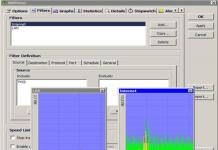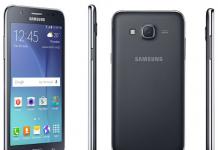Last year, Meizu Pro 5 was announced - a flagship smartphone with powerful hardware and a beautiful design, with a fairly impressive list of positive qualities, but, nevertheless, a large device that was not so convenient to operate with one hand. I know, sometimes such a statement about the inconvenience of using it in a small palm sounds funny, but not when you realize with horror that you cannot answer the call on a crowded bus. Or look at your Twitter feed in bed and are afraid of dropping your smartphone on your nose.
I wondered why a “sixth” is needed if everything is fine now - while maintaining powerful hardware, reducing dimensions and improving small details, Meizu is taking the right steps in improving the flagship, and the reduction in size seems very logical and thoughtful to me.
Specifications
- Operating system: Android 6.0, Flyme
- Screen: Super AMOLED, 5.2” diagonal, resolution 1920x1080, ppi 423, 3D Press
- Processor: ten-core 64-bit MediaTek Helio X25, four Cortex-A53 cores at 1.4 GHz + four Cortex-A53 cores at 2 GHz + two Cortex-A72 cores at 2.5 GHz
- Graphics: Mali T880
- Sound: Cirrus Logic CS43L36 DAC
- RAM: 4 GB
- Storage memory: 32/64 GB (32 on test)
- Main camera: 21 MP, f/2.2, laser and phase detection autofocus, circular LED flash (10 LEDs), 4K video
- Front camera: 5 MP, f/2.0, 1080p video
- Networks: GSM/EDGE, UMTS/HSDPA, LTE (TD/FDD-LTE), DualSIM (nanoSIM)
- Interfaces: Wi-Fi (a/b/g/n/ac) Dual-Band, Bluetooth 4.0 (LE), USB Type C connector (USB 3.1, MHL), 3.5 mm headset
- Navigation: GPS (A-GPS), GLONASS
- Sensors: mTouch 2.1 fingerprint scanner, accelerometer, light sensor, proximity sensor
- Battery: 2560 mAh
- Dimensions: 147.7x70.8x7.2 mm
- Case materials: metal, glass, plastic inserts
- Weight: 160 g.
Equipment
The box has also been improved - now it is quite thick plastic. The Meizu Pro 6 package includes the smartphone itself, a power supply, a USB cable, a clip for removing the slot for nanoSIM cards and accompanying documentation.
The headphones come included with the 64 GB version.
Appearance
Let's move on to the appearance. To be honest, the resemblance to Apple products is almost perfect, and there is no hiding from this fact. The only difference is that the function key is oval rather than round. Some may like it, some may not, but personally I think the front side of Meizu Pro 6 looks good.
It’s really hard to get rid of the feeling that “something” is looking at you with surprised eyes above the screen - all that’s left is to draw the handles.
The 5.2-inch display is framed by thin bezels. Above it there is a 5 MP front camera lens, an earpiece and a light and proximity sensor, and below is the Home key (also known as Back).
The body is made of metal, it has rounded edges and beveled edges. On the left side there is a slot for two nanoSIM cards; and on the right are flat volume and power keys, made of metal and slightly recessed into the body.
There is an additional microphone on top. At the bottom there is a 3.5 mm audio output for a headset, a microUSB connector and external speaker grilles.
On the rear panel, there are thin plastic inserts at the top and bottom, under which the antennas are located.
At the top center is the 21 MP main camera lens, framed by a thin metal frame, and directly below it is an LED flash, made in an original way: there are 10 tiny LEDs around the laser focusing system: 5 cold glow and 5 warm.
In the center of the case there is a large Meizu logo.
The dimensions of the smartphone are 147.7x70.8x7.2 mm and weighs 160 grams. Personally, the weight seems ideal to me - the smartphone is not weightless.
Our review received a gold-colored Meizu Pro 6, but the smartphone is also available in black and silver. In the first version, the front side is dark gray.
Display
As I mentioned earlier, the flagship uses a 5.2-inch SuperAMOLED display with a FullHD resolution of 1920x1080 and a pixel density of 423 ppi. The screen, like the entire front side of the smartphone, is covered with protective glass Corning Gorilla Glass 3 with a rounded effect.The screen has rich colors, good contrast, but I would add maximum brightness for comfortable reading in the sun - sometimes it’s not enough.
The oleophobic properties of the screen are also excellent; there are few fingerprints left, and erasing them is not difficult.
In the settings you can set the color temperature and turn on blue light protection for your eyes.






One of the new products is the 3D Press function, when the force of a touch on the screen causes the smartphone to perform a certain action. For example, a long tap on the “Phone” icon opens a menu in which you choose between adding a new contact or searching from existing ones.
Camera







As mentioned earlier, the smartphone has two cameras: a front one with a resolution of 5 megapixels and an aperture of F2.0 and a main one with a resolution of 21 megapixels and an aperture of F2.2.
Meizu Pro 6 is the first to use the Sony IMX230 module with a multi-layer CMOS sensor and phase detection autofocus.
Pictures taken with the main camera are definitely better than those taken by Meizu Pro 5: they are more detailed, less noise, and less obvious pixelation in dark colors in frames taken at night.
The video is shot in maximum resolution 4K (3840x2160).
In the manual settings you can set the parameters of shutter speed, focus, exposure, white balance and ISO, there are standard shooting modes.









There are modes for shooting GIFs, full panoramas and shots with an editable focus point.
Iron








The smartphone uses a MediaTek Helio X25 chipset with ten cores and three clusters (Tri-Cluster), which automatically switch depending on the tasks used.
Using multiple clusters and distributing tasks among them is necessary for high performance and maintaining battery charge levels.
The smartphone uses a Mali-T880MP4 graphics processor (perhaps the only weak link). The amount of RAM is 4 GB, built-in 32 and 64 GB, depending on the configuration, but both versions lack support for microSD memory cards.










This hardware is enough for the interface to work quickly, work quickly with applications and the browser, games also fly, but the smartphone heats up noticeably.
A review of Meizu Pro 6 would not be complete without information about networks - the smartphone supports Dual SIM (Nano) technology. Both cards can operate on 2G GSM/GPRS/EDGE, 3G WCDMA/HSPA+ and 4G FDD-LTE networks.
Supports work with Wi-Fi networks (ac and b/g/n), dual-band Wi-Fi (2.4GHz/5GHz), Bluetooth 4.0, GPS (which did not cause any complaints), as well as VoLTE technology. NFC is not supported.
Shell















The operating system is the brand new Android 6.0, of which there is practically nothing left due to the proprietary Meizu Flyme launcher.














The screen supports SmartTouch functions, when a dot appears on the screen when turned on, and the user can perform various actions with one finger, all of which are described in the settings in the section of the same name.










Otherwise, there are few changes, I still like the shell, it has style, it is beautiful and quite comfortable - I have no complaints.
Battery
As you can easily guess from the description of the appearance, Meizu Pro 6 uses a non-removable battery. Its capacity is 2560 mAh, which seemed to me to be insufficient for this smartphone.In general, with moderate use, with Wi-Fi turned on for several hours, the use of social media. networks, listening to music and conversations, the smartphone lasts for a whole day of use without recharging.
In our test (Chrome, Wi-Fi, 50% screen brightness, power saving mode), the smartphone also lasted well - 11 and a half hours.

But it’s one thing when a smartphone is lying on a table in hothouse conditions with a browser running, and another when it’s trying to find a network in the subway, the brightness is turned up to full because of the sun, several applications are running at once - this is where the processor and screen make themselves felt, eating away the charge. It's not all bad, no, but you still have to think about whether you'll have enough charge until the end of the day and whether there's a Type C in the cafe where you're going to grab a bite to eat.
The time to fully charge the battery is approximately an hour and a half.
Let's sum it up
After the review, Meizu Pro 6 makes a positive impression both when briefly viewing the characteristics and when testing the smartphone. We won’t talk about the obvious disadvantages when we frankly like a smartphone - perhaps we can only outline the next stage in improving the smartphone - a less “hot” processor (albeit less productive), a brighter display and a capacious battery.In fact, the few shortcomings of the Meizu Pro 6 device are listed in this cunning way.
Meizu Pro 6 fits comfortably in one hand. In design, it is almost no different from its predecessors, but nevertheless looks stylish and attractive.
The dimensions of the smartphone are 147.7 x 70.8 x 7.5 mm, weight – 164 grams. So, it is slightly more compact than LG G5, but weighs about the same. Meizu Pro 6 is pleasant to the touch, its body is completely non-slip and therefore is unlikely to “slip” out of your hand.
In terms of design, this is a typical representative of the Meizu Pro line, with a metal body and screen. From the front, the smartphone is similar to both its predecessors and the iPhone 6 Plus, except that the “Chinese” has slightly narrower frames and a slightly different shape of the main button. Thanks to this, the ratio of screen area to total surface of Meizu Pro 6 was higher than that of Apple phones - 71.6% versus 67.7%. Hidden in the Home key is a fairly fast and sensitive fingerprint scanner. True, it does not always work the first time, mainly due to its small area. In the same Huawei P9 Lite, the scanner is almost twice as large, you will definitely hit the right areas of your fingertips. As is now fashionable, the edges of the glass on the screen are slightly curved - this is what is commonly called 2.5D glass. It looks stylish, but is even more reminiscent of iPhones.
The aluminum on the body is interrupted only on the rear panel, which is recognizable thanks to a pair of unusually shaped plastic inserts. They look like curves bending towards the edges of the phone, it looks fresh and unusual. All corners and ends are neatly smoothed, the camera only slightly protrudes from the body. Directly under the lens you can see an unusual ring of LED backlights - it looks original, but, in our opinion, not very nice, maybe even the opposite. As mentioned above, the body is made of metal and is of very high quality, practically does not bend, does not creak or play anywhere.
Meizu Pro 6 can be purchased in five colors: Gray, Gold, Silver, Flames Red and Rose Gold.
Screen - 3.6
Meizu Pro 6 has a high-quality, but not ideal 5.2-inch screen with a feature in the form of pressure recognition.
The display received Full HD resolution (1920×1080 pixels) and a Super AMOLED matrix. The image on the screen is quite clear, the pixel density is 423 per inch. The screen is good in almost everything - protective glass Gorilal Glass 4, high contrast, wide viewing angles, and it is also easy to read in the sun. In addition, it has a fairly effective oleophobic coating, it hardly collects fingerprints and is easy to wipe off. The brightness varies from 3 to 380 cd/m2, the screen will not dazzle in the dark and looks quite bright. But the color accuracy turned out to be average for smartphones, about 4 units (we expect no more than two from flagships). The image on the screen has some kind of bluish-green tint. This can be partially cured by manually adjusting the color temperature in the settings (set it to “warmer”), although the manufacturer could do this on their own.
The most unusual thing about the new product is support for 3D Press, an analogue of the 3D Touch function (pressure recognition, like in). Moreover, you can adjust the trigger strength yourself (strong, normal, soft), and also turn it off. This function works the same way as on Apple devices - it can be compared to right-clicking on a laptop. The main problem is that Android does not yet support such a function, that is, using 3D Press you can only control a set of pre-installed applications in the original Flyme firmware. And these possibilities are not at all impressive.
Camera
Meizu Pro 6 shoots at the flagship level and can easily replace a budget camera.
The cameras of Meizu Pro 6 and its predecessor Pro 5 are identical - the same Sony IMX 230 sensor (size 1/2.4") of 21 MP and a front camera of 5 MP. The phone combines phase and laser focusing systems. In addition, an unusual feature is a ring of 10 LED illumination under the lens, they are used as a flash when shooting. But if focusing really works perfectly, then you shouldn’t expect anything unusual from the flash; it’s no worse or better than on other smartphones (because it’s not the number of LEDs that determines its quality).
The camera interface is simple and clear, similar in appearance to that used in other Android smartphones. As expected, the camera has an HDR mode, panorama shooting and a separate mode for macro photography. The manual configuration options are quite wide; you can adjust many parameters:
- ISO (100 to 1600)
- focus (from macro to infinity)
- exposure (−3 to +3)
- shutter speed (from 1/1000 to 20 seconds)
- saturation (low, medium, high)
- contrast (low, medium, high)
- white balance (5 options).
Not such a wide range, only the shutter speed range is impressive. The smartphone takes pictures with high quality, but almost the same as its predecessor. Nevertheless, this is enough to replace your point-and-shoot camera or create a high-quality selfie. In our opinion, in daytime photos, Meizu Pro 6 is almost not behind leaders like the Galaxy S7, but is inferior to them in evening shooting. As a rule, the camera focuses quickly and correctly, shows high detail and sets the white balance correctly. The only things that could be corrected would be the slight “noisiness” of the pictures, the extremely long HDR mode and the slight blurriness at the edges of the frame, which is often found in cameras with such a large number of megapixels.
The main camera can shoot high-quality video up to 4K resolution. What we didn't like is that the tracking focus is too sensitive when shooting; it can suddenly jump from object to object and ultimately ruin the video.
Photo from camera Meizu Pro 6 - 4.1
Photo in HDR format from camera Meizu Pro 6 - 4.1
Photos from the front camera of Meizu Pro 6 - 4.1
Working with text - 5.0
On Meizu Pro 6, you can initially choose one of two keyboards: your own (system) or TouchPal. Both are quite convenient, but TouchPal likes to annoy you with a bunch of pop-up messages and prompts you to update or adjust something. The native keyboard has markings for additional characters (it disappears somewhere in the Russian layout). And TouchPal seems to have everything, including continuous input (Swype). The capabilities of this keyboard are wide, for example, you can adjust the size and design of the keyboard, there is even a speedometer to display your typing speed.
Internet - 3.0
Meizu Pro 6 uses a fairly advanced and convenient proprietary browser. It is somewhat reminiscent of Safari on the iPhone 6 in terms of the layout of the controls, even the reading mode is almost the same. Moreover, the icon for switching to it looks almost the same and is located in the same place - next to the address bar of the page. In terms of functionality, the browser on Meizu Pro 6 is not much different from mobile Safari, except that there is a transition to the full version of the site, a night mode and a “landscape only” mode for viewing pages. The only thing missing is that the text automatically fits the width of the screen.
Communications - 5.0
Meizu Pro 6 received a typical flagship set of wireless communications:
- high-speed dual-band Wi-Fi 802.11 (a/b/g/n/ac) with Wi-Fi Direct
- Bluetooth v4.1 with A2DP profile
- fast LTE Cat.6 (up to 300 Mbit/s), available on both SIM cards
- A-GPS with GLONASS and Beidou support
- NFC chip.
As has become fashionable lately, the phone does not have an FM radio. There is also no slot for a memory card, although the predecessor had one. The smartphone supports two NanoSIM cards, and instead of the usual MicroUSB connector on the body there is a newer USB Type-C with fast charging capabilities (like the Huawei Nexus 6P).
Multimedia - 4.4
Meizu Pro 6 showed good results in terms of sound quality and support for audio and video codecs. The smartphone calmly “chewed” all the videos, except for a couple of test ones in MKV format. Even audio was played in AC-3, which is not typical for mobile devices.
Meizu Pro 6 comes pre-installed with its own, nice-looking music player with an equalizer (adjusting sound by frequency, works only with headphones). The video player turned out to be quite simple, there is only rewind and volume adjustment by “swiping” across the screen and a viewing mode in a separate window on top of the desktop or other applications.
Performance - 4.1
Meizu Pro 6 works quickly and smoothly when solving everyday tasks, but in heavy games the frame refresh rate frankly sags. This is a little sad for hardware that claims to be top-end.
The new 10-core MediaTek Helio 25X chipset is responsible for the performance of the new product - two cores operate at a frequency of 2.5 GHz, four cores - up to 2 GHz, and the remaining four - up to 1.4 GHz. The amount of RAM is impressive - 4 GB (like the HTC 10). In general, the smartphone works quickly and smoothly when solving most tasks, but in popular games like Asphalt 8 and NOVA 3 the picture openly jerks. In various synthetic performance tests, it is quite comparable to other flagships like the Samsung Galaxy S7 or LG G5. But in graphics tests, the new product is already noticeably inferior to most of them and shares positions with Huawei P9 and other solutions with the same chipset. It's funny that although Meizu Pro 6 received higher scores in tests than Meizu Pro 5, it is still inferior to it in 3D tasks. This means that in some heavy games the new product will be worse than its predecessor. As for the scores in the benchmarks themselves, they are as follows:
- Geekbench 3 - 6401, slightly higher than Huawei P9 (after all, 10 cores are rated at once)
- AnTuTu 6.2 – 95430, higher than 2015 Android flagships, for example Motorola Moto X Force
- Ice Strom Unlimited from 3DMark - 15916, comparable to the LG Nexus 5X, the “flagship for the budget conscious,” or the Galaxy Note 4, an older phablet.
The body of the smartphone does not heat up that much during operation - after half an hour of racing, its temperature did not exceed 39.5 degrees.
Battery - 3.5
The operating time of Meizu Pro 6 turned out to be average, even mediocre, which is not what you expect from a flagship model. Although in some individual tests it showed very good results.
The smartphone received a non-removable battery with a capacity of 2560 mAh - an average figure for its diagonal, but low for hardware that claims to be top-end. In the video test (watching HD video at maximum brightness in flight mode), Meizu Pro 6 performed well thanks to the economical AMOLED display matrix - 10 and a half hours. This is an above-average result, comparable to the long-lasting Lenovo Vibe P1m. But in music player mode, the phone, roughly speaking, failed, having worked for only 39 hours - a result typical for a budget model like the Microsoft Lumia 550. In other tests, Meizu Pro 6 showed good times. For example, an hour of battery benchmark work from GeekBench 3 dropped the battery by 12% (almost like the Huawei P9), shooting a 10-minute Full HD video - only 5%. In Asphalt 8, the phone was already discharged quickly - 30% in an hour, the result is slightly worse than average. In daily use, the Meizu Pro 6 was enough for us for a day at most, although sometimes it could run out of power in just half a day of fairly intensive use (Wi-Fi on, calls, downloading a large number of applications, active testing).
The manufacturer claims support for fast charging, but the kit comes with a simple 2A adapter. For such current and battery capacity, it took a long time to charge the smartphone, a little more than two hours.
Memory - 3.5
You can choose the Meiza Pro 6 smartphone in two versions: with 32 or 64 GB of permanent memory. In the 32 GB version, 24.9 GB is available to the user. For most users, this will be enough unless you shoot a lot of 4K video. For some unknown reason, the manufacturer forgot to add a slot for a memory card, although its predecessor had one. Apparently, they were so carried away by copying the iPhone that they even adopted its disadvantages - it will not be possible to expand the original volume.
Peculiarities
Meizu Pro 6 runs Android 6.0 Marshmallow and the proprietary Flyme 5.2 OS interface. It is not yet clear whether the phone will eventually receive an update to Android 7.
What’s special about the smartphone is the interface, pressure recognition on the screen, an AMOLED display, a fingerprint scanner and a ring of LEDs for illumination on the back of the case. The proprietary Flyme OS is compared to iOS, but in appearance it still looks more like Android, with some rather childish-looking icons (in the spirit of Alcatel). What this interface has in common with iOS is, rather, the control method - there is only one control key, so the manufacturer draws back and forth moves on top in the form of arrows and pointers, as on the iPhone 6s and any other Apple phones. The proprietary feature with pressing force on the screen looks interesting, but there is simply nowhere to use it. Even on iPhones, they don’t really use it, and it’s not worth expecting that developers will waste time on this feature for the sake of one Meizu Pro 6 (with a couple of other Android smartphones, for example, Huawei P9 Plus).
Smartphones from the Chinese company Meizu have been present on the Russian “gray” market for a very long time. However, Russified models have just appeared in large stores. Let's see what kind of “Chinese” they are using the flagship Meizu Pro 6 as an example.
The most affordable flagship
Meizu produces several series of smartphones, and the Pro line is the flagship. At the same time, they are cheaper than their counterparts.
So, at the time of writing the review, the prices were as follows:
Meizu Pro 6 – from RUB 32,990;
Huawei P9 – RUB 39,990;
HTC 10 – RUB 49,990;
Sony Xperia X Performance – RUB 50,990;
Samsung Galaxy S7 – RUB 49,990;
iPhone 6s – from RUB 45,990;
iPhone 7 – 56,990 rub.
Why is Meizu cheaper than the iPhone, and even cheaper than the Chinese Huawei? Maybe this is not a flagship at all? Let's figure it out.
Meizu Pro 6 continues the fashionable ideas of “streamlined” design. At the same time, he also has his own chips. Look at how the plastic antenna layouts on the rear panel are made - the Chinese were the first to guess how to change their shape and thus fit into the natural curves of the case. Then Apple did the same with the iPhone 7.

A circular flash with a dozen LEDs is also a new word in design. The camera practically does not protrude beyond the body. The thickness of the frames around the screen is only 0.7 mm - they are completely invisible! Not bad, you'll agree.



Otherwise, Meizu Pro 6 is a typical representative of its time. It has an all-metal body with sandblasting, convex 2.5D glass, an oval button under the screen with a built-in fingerprint scanner, like Samsung smartphones. There is a SIM card tray that can be pulled out using a “clip”; there is no compartment for a memory card. Overall the build and quality of materials is first class.
What diagonal should the screen have for you to have a good life in the world? Nobody knows except you. However, Meizu decided that the optimal size is 5.2 inches. This screen was installed in Meizu Pro 6.

The screen is based on 5.5-generation Super AMOLED panels from Samsung. Colors are rich, which is typical for Super AMOLED panels, and if your eyes are not very comfortable, the color reproduction can be adjusted. Black color cannot be deeper, the contrast is at its best. The declared brightness reserve is 350 cd/m2, with the lower threshold being 3 cd/m2. The latter is important because the lower the minimum display brightness, the less your eyes will get tired when interacting with your smartphone in the dark. Add to this the Eye Protection Mode, which reduces the intensity of blue light, and you have the perfect screen for reading before bed.

The Full HD screen resolution is enough for everyday life - the fonts and lines are smooth and smooth, not a single pixel is visible.
The Meizu Pro 6 screen can recognize pressure. The technology is called 3D Press and is one-to-one similar to Apple’s 3D Touch. We will tell you how this works when we turn to the interface.
On top of the screen is protective glass Gorilla Glass 3, which is almost impossible to scratch, but can be broken.
Performance
Meizu Pro 6 became the world's first ten-core smartphone powered by the MediaTek Helio X25 processor. According to synthetic tests, Meizu Pro 6 is slightly inferior to Samsung Galaxy S7 edge, LG G5 and iPhone 6s in performance. There is something else. The MediaTek Helio X25 is incredibly power efficient, but we'll talk about that in the battery life section.

But still, Meizu Pro 6 is a flagship with flagship resources and 4 GB of RAM. It runs fast, smoothly, and even heats up decently.
You can ask the question: why was the processor from MediaTek chosen if the solutions from Qualcomm and Samsung are more powerful? The answer is extremely simple: firstly, MediaTek processors are cheaper, and secondly, thanks to MediaTek, Meizu released the world's first ten-core smartphone, and this sounds very, very serious.
At one time, the Meizu company began by producing MP3 players, and therefore it is not surprising that it transferred its musical experience to smartphones. Meizu Pro 6 is called the “music flagship”, and for good reason. A separate Cirrus Logic CS43L36 digital-to-analog converter is responsible for the sound here. This is an entry-level DAC that supports 96 kHz/24-bit audio and, if you like to listen to music in lossless compression formats such as FLAC, then Meizu Pro 6 will please you.

How does Meizu Pro 6 sound? Take your expensive headphones and come to KNOW-HOW to listen. The sound is clear, spacious, highly detailed. Meizu also worked on the sound quality from the external speaker. The third generation NXP Smart PA chip adds clarity and volume.
Supplemented phase autofocus with laser autofocus so that the camera quickly captures moving objects;
Added a powerful circular flash with ten LEDs to simplify shooting in low light conditions;
Activated the ability to shoot 4K video at 30 frames per second.
What happened in the end? Of course, the photo capabilities of Meizu Pro 6 do not reach the level of 2016 flagships, which are crammed with the latest technologies. However, the camera focuses quickly and accurately, taking clear photos and even 4K videos. What else is needed?

The Chinese approached the issue of communication modules strangely. For some reason, there is no NFC here, which no flagship today can do without. However, not many of us need it.

A much stranger feature is the lack of LTE support at 800 MHz (Band 20). It is this range that is used by Russian operators when they need to spread the LTE network over long distances. This means that far from a big city, there is a risk of losing a stable and fast 4G connection, and even in a metropolis you may encounter a decrease in speed. There are no problems with 3G networks.
Android and Flyme interface
Meizu Pro 6 runs on the Android 6.0 Marshmallow operating system, but the graphical interface has been changed beyond recognition. The shell is called Flyme and, like other Chinese shells, it makes Android look like iOS. Flyme has no app menu, no back button, no context menu button and no home button. The functions of these buttons are assigned to a large hardware button under the screen.

Pressing it completely returns to the home screen, lightly touching it returns to the previous one. Swiping down the screen opens a list of running applications. Those who are used to the standard Android buttons will have to relearn them, but it's not as scary as it seems.
It is important to understand that Flyme is just a shell, but inside is regular Android with the Google Play application store. You shouldn’t be afraid of “crooked” optimization: you won’t see any Chinese characters or “translation difficulties”.

3D Press pressure sensing technology is directly linked to the interface. Like iOS, it allows you to call up pop-up menus for quick access to the most important functions of applications. For example, to write a message, you do not need to launch the application - just click on the icon and click “Write message”. As in iOS, not all installed applications support this technology yet, and third-party developers are in no hurry to use it. But it still exists, and it’s cool, it’s “flagship-style.”
Working hours
Meizu Pro 6 received a battery with a capacity of 2560 mAh. This is not much, technically savvy readers will notice, but do not forget that optimization still has the last word.
So, we already know that Meizu Pro 6 has an economical Super AMOLED screen. Its truly black color is achieved due to the fact that the pixels in the black areas simply do not emit light, which means they do not consume electricity.
The MediaTek Helio X25 processor also features “unattainable” energy efficiency. The never-before-seen three-cluster Tri-Cluster architecture means that simple everyday tasks, of which the vast majority, are handled by one cluster of cores, and complex ones by two others, which are turned off under “normal” conditions of use.

So, thanks to a brilliant selection of components, Meizu managed to squeeze a full day (from morning to night) of battery life in mixed mode out of a modest battery. If something goes wrong and the smartphone runs out unexpectedly quickly, then you can recharge it just as quickly - Meizu Pro 6 only takes 10 minutes to replenish the charge to 26% and only an hour to fully recover to 100%. Wonderful!
So, it has been proven: Meizu Pro 6 is the most affordable flagship on the market. Top-notch materials, first-class build, cutting-edge design, great screen, powerful and energy-efficient ten-core processor, external DAC, camera with laser autofocus and ring flash, fingerprint scanner, good battery life, and even pressure recognition technology - guys, Yes, this is complete stuffing! In addition, for that kind of money Meizu Pro 6 simply has no competitors. Come to KNOW-HOW stores and feel it yourself!
Articles on the topic
Meizu MX6. There is no camera like this anywhere else! - read Meizu M3 Note. Affordable premium smartphone - read Meizu M3s mini. Inexpensive metal smartphone with a fingerprint scanner - readLiked?
Tell your friends!
Today, Meizu Pro 6 (Meizu Pro 6 Plus) is one of the flagship smartphones of the popular Chinese manufacturer Meizu. And for good reason – just look at the characteristics:
- Dimensions: 147.7 x 70.8 x 7.2 mm;
- Weight: 160 g;
- Housing: metal with plastic inserts;
- Display: AMOLED+, 5.2”, 1920x1080 pixels, 423 ppi, 2.5D glass, 3D Press function;
- Chipset: MediaTek Helio X25, 10 cores (4x1.4 GHz (Cortex A53), 4x2 GHz (Cortex A53), 2x2.5 GHz (Cortex A72));
- Networks: EDGE / GSM / UMTS / HSDPA / LTE;
- Dual SIM cards: yes, nanoSIM;
- Graphics accelerator: Mali T880, 4 cores;
- RAM: 4 GB;
- Internal memory: 32 Gb or 64 Gb (no memory card slot);
- Main camera: 21 MP, f/2.2, six-element lens, phase and laser autofocus, 10-LED flash (circular), video recording in 4k resolution;
- Front camera: 5 MP, video recording in 1080p, f/2.0;
- Wireless interfaces: Bluetooth0, Wi-Fi;
- Wired interfaces: USB Type C, 3.5 mm audio output;
- Navigation: GPS / A-GPS, GLONASS;
- Battery: 2560 mAh, non-removable;
- Additionally: accelerometer, proximity and light sensors, fingerprint scanner.

The smartphone is supplied with a standard set: the gadget itself, a TypeC USB cable, a charging block, a clip for removing the SIM card tray, a warranty and instructions. Externally, the gadget is very similar to the iPhone 6S, except that the button is oval rather than round. The body is rectangular with beveled corners, and the now popular 2.5D glass with beveled side edges is installed on the front. In general, the gadget is pleasant to look and feel, fits comfortably in the hand and does not slip.
The back panel of the case is made of metal, along the perimeter of the edges there are plastic inserts for the correct operation of the antennas. The user can choose any of three colors of the device: gold, silver or dark gray. We received the Meizu Pro 6 Plus Black 64 GB smartphone for review. The back of the device noticeably retains fingerprints, but the front panel has Gorilla Glass with an excellent quality oleophobic coating.

On the front panel of the device at the top there is a front camera peephole, proximity and light sensors and a speaker with a large volume reserve and good frequency. Below, under the display, there is a proprietary oval key that performs the functions of a mechanical button, a “Back” action and a fingerprint scanner.
The bottom edge of Meizu Pro 6 contains a 3.5 audio output for a headset, a main microphone, a connector for a USB connection and speakerphone speakers. An additional microphone is located at the top. The right side is equipped with a power button and a volume rocker, which are made of metal and are very convenient to use. On the left is a metal tray for two nano SIM cards. There is no memory card provided here. On the back cover of the device there is the main camera and a circular flash with 10 LEDs with a laser focusing system.

Screen
The Pro 6 model is equipped with a 5.2” FullHD screen with anti-glare coating, a resolution of 1920x1080 pixels and a density of 423 ppi. The Super AMOLED matrix from Samsung is a definite plus - the viewing angles here are as wide as possible, but at some points at a strong angle the display gives off a slightly green color. As for the saturation of the picture, everything is great here. You can choose the warmth of color that is comfortable for your eyes.
The display supports many interesting functions, such as waking up with a double tap on the screen or Smart Touch. There is also a switchable 3D Press function (similar to Apple’s 3D Touch) – recognition of the pressure applied to some icons in the interface.

Battery
A non-removable battery with a capacity of 2560 mAh is installed here. With an average load, the battery will last for 16-17 hours, namely: 30 minutes of telephone calls, 6 hours of mobile Internet use (background activity and regular data synchronization), 5 hours of Wi-Fi use, 20 photos and 1 hour of audio track playback. In a more economical mode, the gadget will last for a day, and with constant calls on the phone – approximately 13 hours. You can watch movies for up to 9 hours, play with toys for only 3.5 hours. What can I say - the battery could have been made more powerful. The battery charges very quickly - from 0% to 100% in just 1 hour.

Cameras
The Meizu Pro 6 smartphone is equipped with an excellent camera based on a sensitive sensor from Sony with a resolution of 21.16 megapixels, a six-element lens, f/2.2 aperture and a pixel size of 1.12 nanometers. Front camera with a resolution of 5 megapixels and f/2.0 aperture. The circular flash consists of 10 diodes and has two colors - cold and warm. There is also phase and laser focus, but there is no optical stabilization.
A comparison with the previous Pro 5 model shows that the Pro 6 takes pictures with a wider viewing angle, but the detail has not changed. But in general, focusing is faster, there is less noise in the photo even in the dark, and the picture has become deeper and more voluminous.

Meizu Pro 6 can record video in resolutions up to 3840x2160 pixels at 30 fps. The quality is excellent, but the viewing angle is narrow. The usual settings in the camera settings are ISO, focus, exposure, and shutter speed.
Processor and performance
The model is equipped with a Mali T880 graphics processor and a chipset from Taiwan MediaTek Helio X25 - this is the world's first model with 10 cores and a 3-cluster architecture. This is the fastest device in terms of animation playback and the speed of displaying information. But if we talk about games, then, unfortunately, games that are too heavy will not work here.

Sound and multimedia
The Meizu company is famous for its speakers, and the Meizu Pro 6 (Meizu Pro 6 Plus) is no exception to the rule. There is a very loud mSound speaker installed here, which reproduces sound very clearly and without wheezing, as well as an improved chip that has the ability to intelligently control the vibration of the membranes. There is also real-time overheating protection installed here.
With headphones, the smartphone sounds no worse, or even better. But unfortunately, here you cannot select one of several sound profiles for various headset modules, and the settings include only an equalizer with the values set initially. The development team reports that the Hi-Fi module is more energy efficient (75%) compared to modules of previous generations.

The conversational microphone and speaker do not cause any complaints, there is practically no extraneous noise, there is also high-quality noise reduction and an additional microphone, which is located on the top edge of the device. All microphones in the gadget are quite sensitive - they record even quiet speech well. You can record telephone conversations directly from the line. There is no FM radio.
Results
- Connection quality. There are no complaints here, the smartphone picks up the cellular network well, and the sound in the speakers is clear. Medium vibration signal. The lack of a notification indicator is a minus.
- Sound. The earpiece is of top quality and the sound volume is very good. The speakerphone also transmits sound well and clearly, but there is a bit too much low frequency. The headphones are also excellent - no noise or distortion.

- Display. Despite the fact that the calibrator shows good values, at too strong a viewing angle the picture may appear green. In all other respects, the screen shows excellent performance - high clarity, contrast, accurate color reproduction, you can adjust the saturation of the display. It’s worth highlighting the blue filter as a separate item.
- Cameras. If optical stabilization was added to this smartphone, then this model could be designated as the best among similar devices. But even without this, the camera is good: it focuses accurately and quickly, the photos are bright and virtually noise-free.
- Appearance. The durable and well-built case has the disadvantages that fingerprints are highly visible on it, but the display is coated with an oleophobic layer on which fingerprints are not visible. The on/off button could be made more visible.

- Performance. But here you can’t do without negativity. The processor from MediaTek cannot handle modern games at all. Therefore, if you like to play games, then Meizu Pro 6 (Meizu Pro 6 Plus) is not worth taking. It is likely that after some time the developers will “tailor” games just for the Helio X25 processor, and then you will be able to enjoy the latest shooters and racing games. But in the speed of animation playback and program operation, the processor is clearly good here.
To be honest, we expected that initially the price for the Meizu Pro 6 device would be around 28 thousand rubles, and for the Meizu Pro 6 Plus - an average of 31 thousand rubles. But if we subtract the cost of a wired headset (headphones) from the price officially announced by Meizu representative offices in Russia (33 and 36 thousand rubles, respectively), then this is exactly the price we get.

The device has some nuances that confuse many users:
- Mediocre CPU optimization for games;
- There is no optical stabilization of the camera.
In our opinion, a modern flagship at this price simply must meet these simple requirements. But, in general, this model is an outwardly attractive device for a user with average requirements for technical characteristics.
If anything is unclear, watch the video review of the Meizu Pro 6 smartphone.
After the release of Meizu Pro 6, there was a certain understatement - the flagship smartphone turned out to be much more modest than usual. However, after the presentation of the Pro 6 Plus version, it became clear that the niche of top-end devices will now be occupied by the Plus series, and the regular Pro will go down a step lower, into the middle class.
Meizu Pro 6 Plus, the review of which is presented to your attention, is an uncompromising flagship. It contains all the best that can be offered to us today. Let's test the device and determine whether it can compete with smartphones in its price category.
Price and main characteristics
Pro 6 Plus is the most expensive smartphone in Meizu’s range, its price in Chinese yuan is 29 and 32 thousand rubles for different versions; at the beginning of official sales in Russia you can expect a price tag of 40 thousand. The technical characteristics of the device fully correspond to its level:
- display: 5.7”, Super AMOLED Quad HD 2560*1440 px;
- processor: Samsung Exynos 8890 (4*2 GHz + 4*1.5 GHz) and Mali T880-MP10 video accelerator;
- RAM: 4 GB;
- internal memory: 64/128 GB, not expandable with memory cards;
- camera: main – 12 MP, front – 5 MP;
- communication: Wi-Fi, Bluetooth 4.1, GPS, LTE;
- battery: 3400 mAh.
It is noteworthy that the company abandoned the use of Helio chips from MediaTek in the flagship and installed the Exynos 8890 - the Galaxy S7 runs on a similar processor. In fact, the only criticism of the new product is the lack of a slot for a memory card.
Equipment and appearance
The Pro 6 Plus comes in an elegant matte black plastic box. The packaging is designed in a minimalist style; apart from the model name and company logo, there are no advertising inscriptions on it.

The smartphone package includes:
- charging adapter;
- USB-C cable;
- clip;
- technical waste paper.

The cable is packaged in a separate plastic case - a small thing, but a good thing. The quality of the accessories is excellent.
The appearance of the Pro 6 Plus is typical of the Meizu company, which has found its own style and continues to exploit it. Fans of the company like it, others consider the devices faceless - it's a matter of taste. The smartphone has an all-metal body and is available on the market in grey, black and gold colours.

The entire front of the Pro 6 Plus is covered with Gorilla Glass 3 protective glass rounded at the edges; the surface has a good oleophobic coating.

Above the screen is the earpiece, front camera and sensors. There is also an LED event indicator on top, which is practically invisible when turned off.

Under the screen there is a multifunctional mechanical key mTouch 2.2. This is the first smartphone from Meizu to use the proprietary button version 2.2. Its main difference from the previous version is the presence of a built-in heart rate meter; it also functions as a fingerprint scanner, encrypts individual applications and files, recognizes gestures, etc. However, Pro 6 Plus will be able to measure heart rate only after the release of the firmware update to Flyme 6, which is expected on December 30.

The body of the smartphone is monolithic, its back cover smoothly merges into the side ends. The back side has a pleasant rough texture, it is matte and does not collect fingerprints. To ensure network reception, there are two plastic strips for antennas on the cover.

The edge of the camera lens protrudes slightly beyond the body; under the optics there is a laser autofocus rangefinder, which is framed by a multi-tone LED flash. The flash itself consists of 10 separate diodes, which provides an extremely high level of brightness.
In terms of placement of functional elements, everything is standard: at the bottom there is an external speaker hole, a USB-C connector, a 3.5 port for headphones.

On the left is a slot for a SIM card tray.

On the right is the smartphone’s power key and volume rocker.

The build quality of Meizu's smartphones is traditionally high, this is evident even in budget models, so there are no complaints about the flagship. The body is rigid and resists bending and deformation well. The Pro 6 Plus is comfortable to hold in your hand; due to the rounded ends it does not cut your palm, and the rough surface of the back cover ensures no slipping.
Screen
Pro 6 Plus is equipped with a 5.7-inch Super AMOLED display, which has Quad HD resolution and a pixel density of 515 ppi. This resolution completely minimizes the main drawback of Amoled matrices - PenTile; individual points are not considered even point-blank. Like the processor, the smartphone screen is manufactured by Samsung.

The screen pleases the eye with an excellent level of contrast and wide viewing angles, without inversion in either brightness or color rendition. White color is displayed correctly, without tilting to the cold side. The maximum brightness is 600 cd/m2, which is enough for comfortable use of the smartphone in bright sunlight.

The Pro 6 Plus display supports 3D Touch technology and is capable of recognizing pressure, which provides additional control capabilities for smartphones. Multi-touch handles 10 touches, there are color temperature settings.

The overall impression of the screen is good; it combines excellent characteristics with decent workmanship, so the Pro 6 Plus gets a well-deserved A here
Performance
The Pro 6 Plus is based on an 8-core Exynos 8890 processor; a similar chip is installed in the Galaxy S7, but here it operates at lower frequencies. The new product has 4 GB of RAM built in, and they also promise the imminent release of the older version 6 Plus, which will have 6 GB of RAM and an uncut processor.

In everyday use, the underclocked processor frequencies are absolutely not felt - the smartphone, as befits a flagship, flies: the interface works perfectly smoothly, there are no stutters when surfing heavy Internet pages, any 3D games are launched at maximum speed.

In the benchmark, the Pro 6 Plus scores almost 114 thousand points, in the geekbench - 6 thousand points in multicore and 1737 points in single. The maximum processor heating under load was 35.6 degrees, which is not much. There is no throttling, the chip operates at the same frequencies even during prolonged gaming.
Camera
The smartphone is equipped with a 12 MP main module and a 5 MP front camera, and looking ahead, we’ll say that both cameras are implemented very well. The rear camera has an f/2.0 aperture, an optical image stabilizer and a 10-segment flash that works in two colors - in general, complete stuffing.


The Pro 6 Plus takes better photos than all Meizu smartphones. The pictures come out sharp, detailed, with excellent color rendition and dynamic range. Autofocus thanks to the laser rangefinder works extremely quickly, there are no problems with exposure and white balance.

The camera is also good in low light conditions. The quality of pictures indoors or in the evening is very decent, largely due to the presence of an optical stabilizer, due to which the automation can set a longer shutter speed without the risk of blurring.


The Pro 6 Plus can shoot video in 4K resolution at 30 fps, the built-in camera application is extremely functional, and there is a full range of manual settings. Overall, the photographic capabilities of the Pro 6 Plus can be compared to those of the Samsung Galaxy S7, which is considered one of the best camera phones on the market.
Speaker, sound quality
Sound quality in headphones is traditionally the strong point of Meizu smartphones. The Pro 6 Plus features a dedicated ESS ES9018K2M audio chip and an ADI AD45275 amplifier powered by Rybicon capacitors. These are Hi-Fi level solutions that can reveal even the highest quality headphones.
The sound in the headphones amazes you from the very first minutes of listening to music. The sound is high quality, lows and highs are perfectly balanced, the stage and sound detail are pleasing. The volume reserve is extremely large; the Pro 6 Plus can handle even high-impedance headphones.

The main speaker of the smartphone is not bad, it is loud and very clear - there is no metallic tint to the sound, there is even a slight hint of low frequencies. Suitable for viewing video content and signaling calls and notifications.
Battery
Pro 6 Plus is equipped with a 3400 mAh battery. You can’t call it a long-liver – battery life is average in the ward, but the smartphone, even with active use, is enough for a whole working day. During testing, the device lasted 12 hours when surfing the web with maximum screen brightness, 14 hours when playing HD video, and gave 6 hours of screen operation at maximum load.

It supports fast charging technology, which takes no more than 60 minutes, and also has standard and extreme energy-saving modes. In the latter, the smartphone screen turns black and white and all functions, except the dialer, are frozen, which allows you to stretch the charge for as long as possible.
Communication and Internet
The smartphone has a standard set of wireless interfaces on board - Bluetooth, Wi-Fi, and an NFC module is also present. The USB-C interface is version 3.0, which provides much higher data transfer speeds than mid-priced smartphones with USB 2.0. There are no problems with operator signal reception and satellite navigation. Pro 6 Plus picks up satellites in 4-5 seconds even on a cold start, which is an excellent result. The accuracy of the geopositioning system is high.
Video review of Meizu Pro 6 Plus
Competitors, conclusion
The Pro 6 Plus is a flagship through and through. This device succeeded in everything, from a good camera and excellent audio capabilities, to a cool screen and top-end hardware. The price of the smartphone cannot be called low; when translated into rubles, the official Chinese price is 29 and 32 thousand for versions with 64 and 128 GB of memory on board.

When the device goes on sale from domestic resellers it will be even more expensive, about 40 thousand, so the Pro 6 Plus can be compared with the flagships of A brands - Galaxy S7 (the gray version can be purchased for 35 thousand), HTC 10 (39 thousand in Svyaznoy). The direct competitor among the top Chinese is (33 thousand for the 128/6 GB version), which is better in terms of performance due to the Snapdragon 821, but is inferior to the Pro 6 Plus in terms of camera and sound quality in the headphones.
If the article was useful to you, do not forget to bookmark (Cntr+D) so as not to lose it and subscribe to our channel!


























